How to Become a Professional Quilter: A Guide
Becoming a professional quilter is not just about stitching fabric together; it's an art form that requires passion, skill, and a keen understanding of the craft. If you've ever marveled at a beautifully crafted quilt and thought, "I want to do that," you're in the right place! This guide will walk you through the essential steps to transform your quilting hobby into a thriving professional career. From mastering the basics to marketing your business, we’ll cover everything you need to know to quilt your way to success.
Before diving into the world of professional quilting, it’s crucial to grasp the fundamental techniques and tools that form the backbone of this art. Think of it as building a house; without a solid foundation, everything else will crumble. Familiarizing yourself with essential quilting terminology and basic skills will set you on the right path. Terms like “batting,” “binding,” and “piecing” will soon become second nature to you. Additionally, practicing basic sewing techniques will bolster your confidence and skill level, allowing your creativity to flourish.
Selecting high-quality fabrics and supplies is vital for creating stunning quilts that stand the test of time. The materials you choose can make or break your project. In this section, we'll discuss the different types of fabrics, threads, and tools that are essential for professional quilting. Remember, just like a painter needs quality paint, a quilter needs the best materials to create masterpieces.
Understanding the various fabric types available helps quilters choose the right materials for their projects. Here’s a quick overview of some common fabrics:
| Fabric Type | Characteristics | Best Uses |
|---|---|---|
| Cotton | Soft, durable, and easy to work with | Quilts, clothing, and home décor |
| Silk | Lustrous and smooth, but slippery | Luxury quilts and special occasion items |
| Flannel | Warm and cozy, with a soft texture | Warm quilts and winter projects |
Choosing the right thread can significantly affect the quality of your quilt. Just as a chef selects the finest spices to enhance their dish, a quilter must carefully choose their thread. Different thread types and weights can create various effects in your work. For instance, using a heavier thread can add texture, while finer threads are perfect for delicate stitching. Knowing how to select the best thread for your quilting projects will elevate your craftsmanship to new heights.
A well-equipped quilter needs the right tools to bring their vision to life. Here are some essential quilting tools you should consider:
- Rotary Cutter: A must-have for cutting fabric accurately and efficiently.
- Quilting Ruler: Helps in measuring and cutting straight lines.
- Cutting Mat: Protects your surfaces and allows for smooth cutting.
Mastering various quilting techniques is essential for professional success. Techniques range from piecing, which involves sewing fabric pieces together, to quilting, where you stitch through the layers of fabric and batting. Each technique has its own set of challenges and rewards. As you refine your skills, you'll discover your unique style and approach to quilting, making your work stand out in a sea of quilts.
Creating a strong portfolio is crucial for showcasing your work and attracting clients. Your portfolio is like your personal gallery; it should reflect your best work and your unique style. Include a variety of projects that demonstrate your skills and creativity. Remember, quality over quantity is key here. A well-curated portfolio will speak volumes about your capabilities as a professional quilter.
High-quality photos can make a significant difference in your portfolio. When photographing quilts, consider the lighting, background, and angles. Natural light works wonders for capturing the true colors and details of your work. A clean, uncluttered background helps your quilt shine. Remember, a picture is worth a thousand words, and you want your quilts to tell a beautiful story!
In today's digital age, an online presence is essential for quilters. Platforms like Instagram, Pinterest, and your own website can be powerful tools for showcasing your work to potential clients. Share behind-the-scenes glimpses of your process, and engage with your audience. Building a community around your quilting journey can lead to valuable connections and opportunities.
Once you've honed your skills and built a portfolio, marketing is key to success. Think of marketing as the megaphone that amplifies your voice in the quilting community. There are various strategies you can employ, from social media campaigns to attending quilting expos. The more you put yourself out there, the more chances you have to attract customers and grow your business.
Building connections with fellow quilters can lead to collaboration and referrals. Join local quilting groups, attend workshops, and participate in online forums. Networking is not just about making contacts; it’s about building relationships that can support and inspire you on your quilting journey.
Social media platforms are powerful tools for reaching a wider audience. Use them to showcase your quilting work, share tips, and connect with other quilting enthusiasts. Create engaging content that resonates with your audience, and don’t forget to use relevant hashtags to increase your visibility. Remember, consistency is key in building a loyal following!
Q: How long does it take to become a professional quilter?
A: The timeline varies depending on your dedication and practice. Some may feel ready in a few months, while others might take years to refine their skills.
Q: Do I need to take formal classes to become a professional quilter?
A: While classes can be beneficial, many successful quilters are self-taught. Online tutorials and community workshops are also great resources.
Q: What should I include in my quilting portfolio?
A: Your portfolio should showcase a variety of your best work, including different styles and techniques. Include high-quality photographs and descriptions of each piece.

Understanding the Basics of Quilting
Before diving into the vibrant world of professional quilting, it's essential to grasp the fundamental techniques and tools that form the foundation of this beautiful art. Quilting isn't just about sewing pieces of fabric together; it's a creative expression that combines skill, patience, and a keen eye for detail. To start your journey, you'll want to familiarize yourself with some essential quilting terminology. Terms like piecing, batting, and binding are crucial to understanding the process. Each of these aspects plays a significant role in creating a quilt that not only looks stunning but also stands the test of time.
Additionally, mastering basic skills such as cutting, sewing, and ironing is vital. These skills might seem simple, but they are the building blocks of any successful quilting project. For instance, precise cutting ensures that your fabric pieces fit together perfectly, while proper ironing helps to create clean seams and sharp edges. Think of it like building a house; if the foundation is shaky, the entire structure is at risk. So, invest time in honing these basic skills before you leap into more complex techniques.
One of the most exciting aspects of quilting is the variety of styles and techniques available. From traditional patchwork to modern designs, the possibilities are endless. Whether you're drawn to the timeless beauty of a classic quilt or the bold patterns of contemporary quilting, understanding the basics will give you the confidence to explore various styles. As you progress, you'll find your unique voice in the quilting community, allowing you to create pieces that truly reflect your personality and artistic vision.
Moreover, don't underestimate the importance of practice. Just like any other craft, quilting takes time to master. Consider setting aside dedicated time each week to practice your skills. Whether it's piecing together a small project or experimenting with different techniques, consistent practice will help you improve and develop your style. Remember, every expert was once a beginner, and the journey is just as important as the destination.
In conclusion, understanding the basics of quilting is the first step towards becoming a professional quilter. By familiarizing yourself with essential terminology, honing your basic skills, and embracing the variety of styles available, you'll be well on your way to creating beautiful quilts that showcase your talent and creativity. So, gather your materials, roll up your sleeves, and let your quilting journey begin!
- What is the best fabric for beginners? Cotton is highly recommended due to its ease of use and versatility.
- How long does it take to complete a quilt? It varies widely depending on the size and complexity, but a simple quilt can take anywhere from a few days to several weeks.
- Do I need a sewing machine to quilt? While hand quilting is an option, a sewing machine can significantly speed up the process and enhance precision.
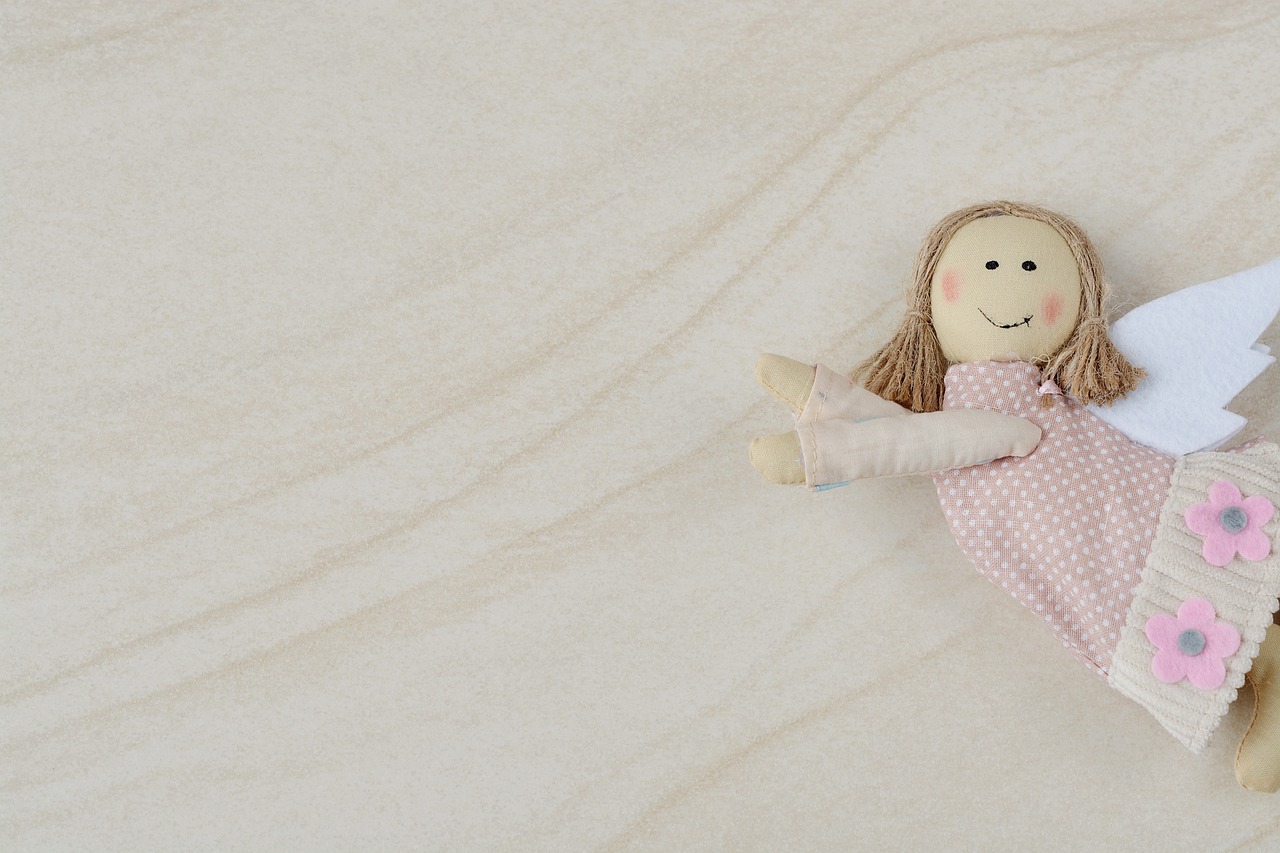
Choosing the Right Materials
When it comes to quilting, the materials you choose can make all the difference between a mediocre project and a stunning masterpiece. Just like a painter needs the right brushes and paints, a quilter must have high-quality fabrics, threads, and tools to bring their vision to life. So, how do you navigate the vast world of quilting supplies? Let’s dive into the essentials!
First off, let's talk about fabrics. Quilting fabric is not just any fabric; it needs to have the right weight, texture, and durability. The most commonly used fabric for quilting is cotton, and for good reason! Cotton is not only easy to work with, but it also holds up well over time. It comes in a plethora of colors and patterns, making it a favorite among quilters. However, there are other fabric types worth considering, such as silk for a luxurious feel or flannel for cozy quilts. Each fabric brings its unique qualities to a project, so understanding their characteristics is vital.
| Fabric Type | Characteristics | Best Uses |
|---|---|---|
| Cotton | Durable, easy to sew, and available in many designs | General quilting, piecing, and backing |
| Silk | Luxurious, soft, and lightweight | High-end quilts, wall hangings |
| Flannel | Soft, warm, and cuddly | Cozy quilts, children's blankets |
Next up is thread. It might seem trivial, but the thread you choose can significantly impact the final look of your quilt. There are various types of threads, including cotton, polyester, and specialty threads. Cotton thread is often preferred for quilting because it blends well with cotton fabrics and provides a nice finish. However, polyester threads are stronger and can be great for machine quilting. When selecting thread, consider the weight as well; lighter threads are great for piecing, while heavier threads can add texture to your quilting.
Now, let's not forget about the tools that make the quilting process smoother and more enjoyable. A well-equipped quilter's toolkit should include rotary cutters, quilting rulers, and cutting mats. These tools help ensure precise cuts and measurements, which are crucial for achieving that perfect quilt. Investing in high-quality tools will save you time and frustration in the long run. Imagine trying to cut fabric with a dull blade—it's like trying to slice bread with a butter knife! Not fun, right?
In summary, choosing the right materials is a foundational step in your quilting journey. By selecting high-quality fabrics, appropriate threads, and essential tools, you set yourself up for success. Remember, the right materials not only enhance the beauty of your quilt but also make the quilting process more enjoyable. So, take your time to explore different options, and don’t hesitate to ask fellow quilters for advice. Happy quilting!
- What is the best fabric for beginners? Cotton is recommended for beginners due to its ease of use and availability.
- Can I use any thread for quilting? While you can use various threads, cotton thread is usually preferred for its compatibility with cotton fabrics.
- What tools do I need to start quilting? Essential tools include a rotary cutter, quilting ruler, cutting mat, and sewing machine.

Fabric Types and Their Uses
When it comes to quilting, the fabric you choose can make or break your project. Understanding the different types of fabrics available is crucial for any aspiring professional quilter. Each fabric type comes with its own unique characteristics, making them suitable for various quilting techniques and styles. Let's dive into some of the most common fabric types and explore their specific uses.
Cotton is the most popular choice among quilters, and for good reason! It's durable, easy to work with, and comes in an endless array of prints and colors. Cotton fabric is breathable and has a natural feel, which makes it an excellent option for both traditional and modern quilts. It holds its shape well and is less likely to stretch or warp, ensuring that your quilt retains its beauty over time.
Next up is silk. If you’re looking to add a touch of luxury to your quilts, silk is your go-to fabric. It has a beautiful sheen and drapes wonderfully, making it perfect for elegant quilts or special occasions. However, silk can be a bit tricky to work with because it slips easily and can fray. It’s essential to use a sharp needle and a fine thread when quilting with silk to achieve the best results.
Flannel is another fabric that deserves a mention. Known for its warmth and softness, flannel is ideal for cozy quilts, especially those intended for cold weather. It’s also a great choice for children's quilts due to its gentle texture. Keep in mind that flannel can stretch more than cotton, so it’s important to use a walking foot on your sewing machine to prevent shifting during quilting.
For those interested in creating unique textures, batik fabrics are a fantastic option. Batiks are made using a traditional dyeing technique that results in vibrant colors and intricate patterns. They are typically made from cotton and are known for their rich, deep hues. Batiks are versatile and can be used in various quilting styles, from contemporary to traditional.
Finally, let’s not forget about denim. This sturdy fabric can add a rustic charm to your quilts. Denim is perfect for creating quilts that are meant to be durable and withstand wear and tear. It’s a great option for picnic quilts or those intended for outdoor use. Just be cautious, as denim can be heavier and may require a more powerful sewing machine to handle the thickness.
To summarize the fabric types and their uses, here’s a quick reference table:
| Fabric Type | Characteristics | Best Uses |
|---|---|---|
| Cotton | Durable, breathable, easy to work with | Traditional and modern quilts |
| Silk | Luxurious, slippery, requires careful handling | Elegant quilts, special occasions |
| Flannel | Soft, warm, cozy | Children's quilts, winter quilts |
| Batik | Vibrant colors, intricate patterns | Contemporary and traditional quilts |
| Denim | Sturdy, rustic charm | Durable quilts, outdoor use |
Choosing the right fabric is essential for the success of your quilting projects. Each fabric type offers unique benefits, and understanding their characteristics will help you make informed decisions. So, the next time you’re at the fabric store, take a moment to consider what you want to achieve with your quilt and select your materials accordingly!
- What is the best fabric for beginners? Cotton is generally recommended for beginners due to its ease of use and availability.
- Can I mix different fabric types in one quilt? Yes, mixing different fabric types can create interesting textures and looks, but be mindful of how they behave when sewn together.
- How do I care for my quilts after they are made? Most quilts can be machine washed on a gentle cycle; however, always check the care instructions for the specific fabrics used.
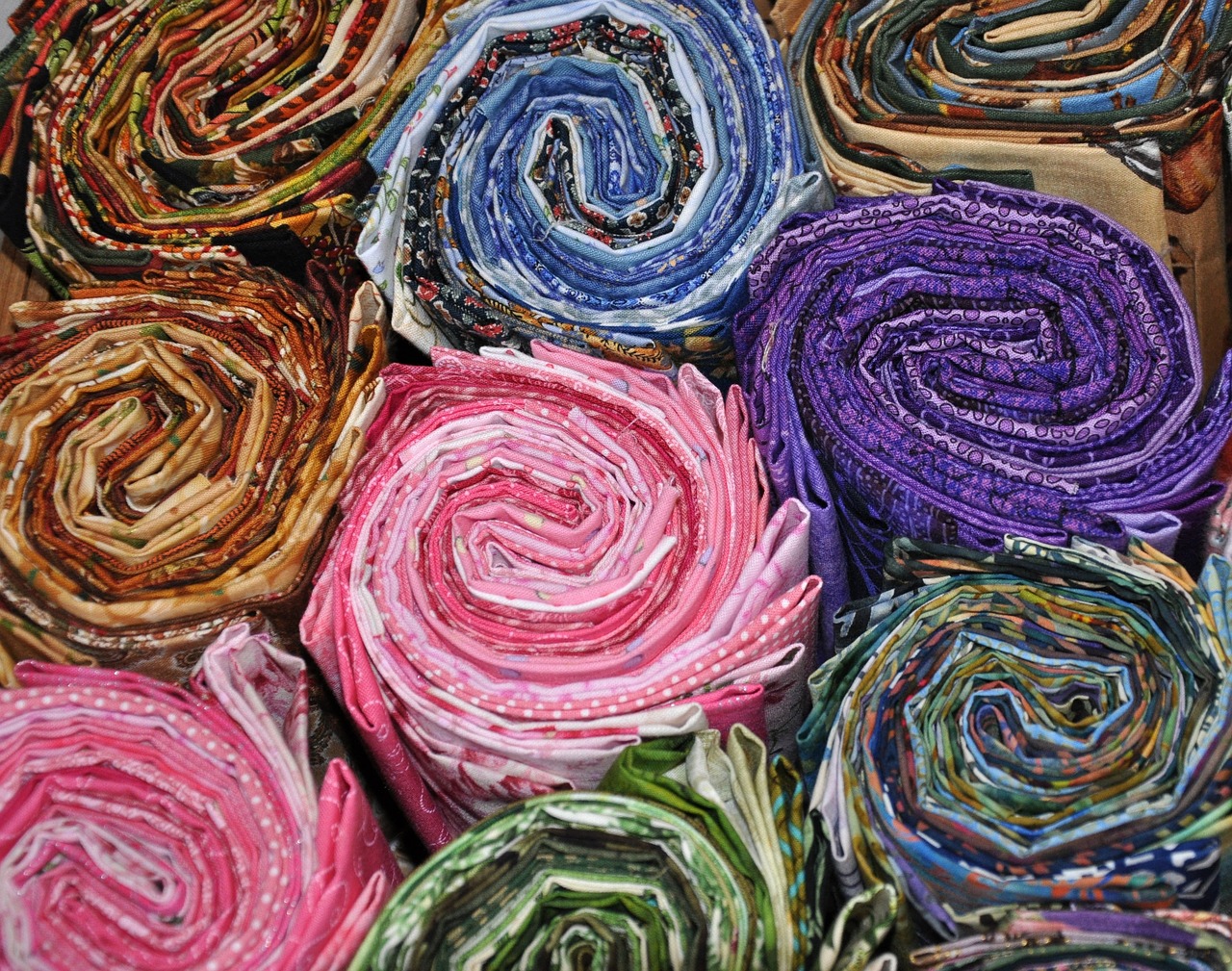
Thread Selection and Importance
When it comes to quilting, the choice of thread is as crucial as the fabric itself. After all, it's the thread that holds everything together, so selecting the right one can make or break your project. Imagine trying to build a sturdy house with flimsy materials; it just wouldn't work, right? Similarly, the wrong thread can lead to unraveling seams and unsightly stitches, ruining your beautiful quilt.
There are various types of threads available, and understanding their characteristics can significantly enhance your quilting experience. Generally, quilting threads come in three main types: cotton, polyester, and silk. Each type has its unique properties and is suited for different quilting techniques. For instance, cotton thread is popular for its strength and versatility, making it an excellent choice for piecing and quilting. On the other hand, polyester thread is known for its durability and resistance to fraying, which is ideal for machine quilting and high-stress seams. Silk thread, while luxurious and smooth, is often reserved for special projects due to its higher cost.
When selecting thread, you also need to consider the thread weight. The weight of the thread can affect the overall look and feel of your quilt. Generally, a higher weight number indicates a finer thread, whereas a lower number signifies a thicker thread. For quilting, most quilters prefer a weight of 40 to 50, which strikes a balance between strength and visibility. However, if you're working on intricate designs, you might opt for a finer thread to achieve more detail.
Another essential factor to keep in mind is the color of your thread. Choosing a thread color that complements or contrasts with your fabric can enhance the overall aesthetic of your quilt. If you want your stitches to blend in, select a thread color that matches your fabric closely. Conversely, if you're looking to make a statement, go for a contrasting color that pops. This can add depth and dimension to your quilt, making it visually stunning.
To summarize, here are some key points to remember when selecting thread for your quilting projects:
- Type: Choose between cotton, polyester, or silk based on your project needs.
- Weight: Opt for a weight of 40 to 50 for a balanced look.
- Color: Match or contrast your thread with your fabric for desired effects.
In conclusion, the importance of thread selection in quilting cannot be overstated. It influences not just the durability of your quilt but also its overall appearance. By understanding the different types of threads and how they interact with your fabric, you can elevate your quilting projects to new heights. So, the next time you’re at the fabric store, take a moment to consider your thread choices. Your quilts will thank you for it!
Q: What is the best thread for quilting?
A: The best thread for quilting often depends on your project. Cotton thread is widely used for its strength and versatility, while polyester is great for durability. Silk can be used for special projects due to its luxurious finish.
Q: How do I choose the right thread weight?
A: For most quilting projects, a thread weight of 40 to 50 is ideal. This weight provides a good balance between strength and visibility, allowing for detailed stitching without being too overpowering.
Q: Can I use regular sewing thread for quilting?
A: While you can use regular sewing thread, it’s recommended to use quilting-specific threads. Quilting threads are designed to withstand the stresses of quilting and provide better results.
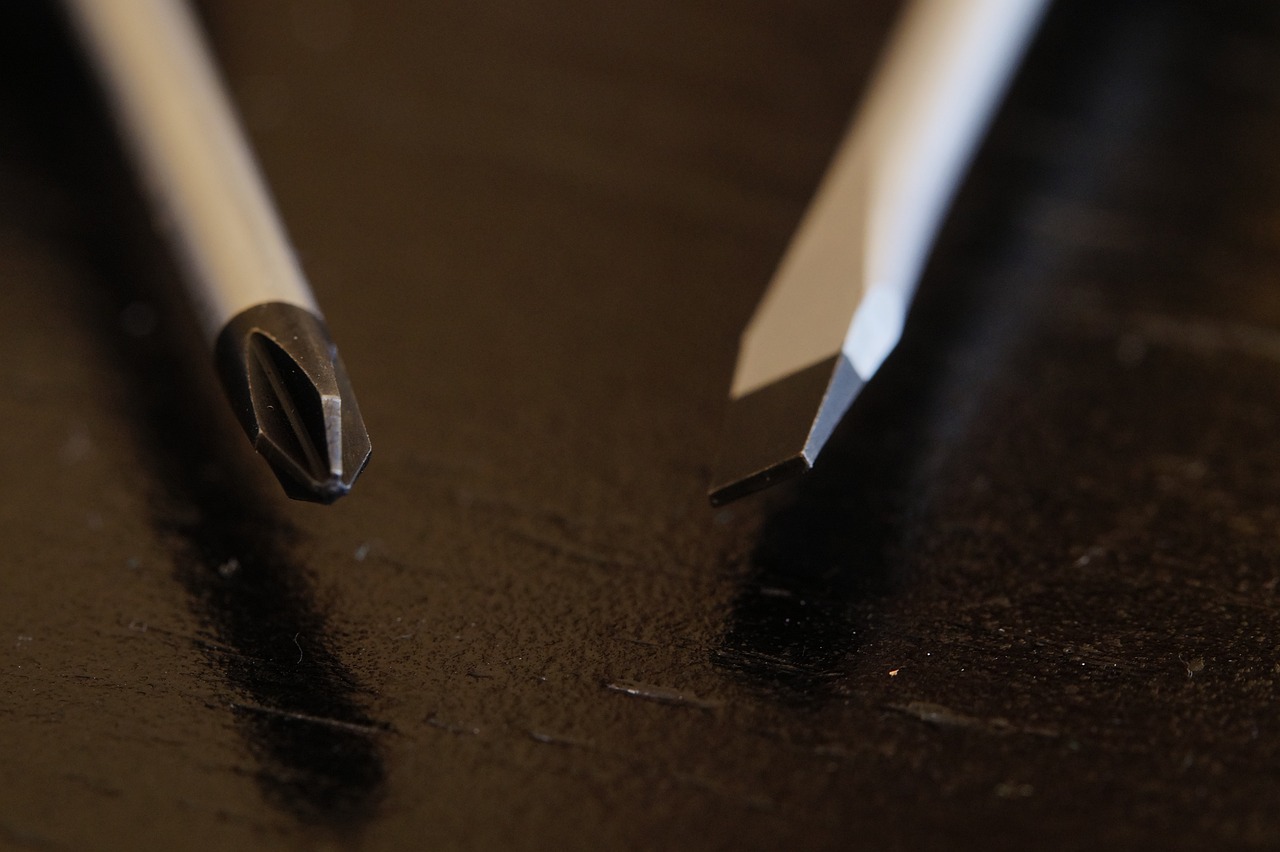
Essential Quilting Tools
When it comes to quilting, having the right tools can make all the difference between a frustrating experience and a joyful one. Think of your quilting tools as the trusty sidekicks in your creative adventure; they help you bring your visions to life and ensure that each stitch is perfect. So, what are these essential tools that every aspiring professional quilter should have in their arsenal? Let’s dive into the must-haves that will not only enhance your quilting experience but also elevate the quality of your work.
First and foremost, a rotary cutter is an absolute game-changer. Unlike traditional scissors, a rotary cutter allows you to slice through multiple layers of fabric with precision and ease. Imagine trying to cut a cake with a butter knife; it just doesn’t work well. A rotary cutter, on the other hand, is like a hot knife through butter! Pair it with a self-healing cutting mat to protect your surfaces and prolong the life of your blades. The combination of these two tools will speed up your cutting process and improve accuracy.
Next up, you’ll need a good ruler. A clear acrylic ruler with grid lines is invaluable for measuring and cutting fabric accurately. It’s your measuring tape, but better! With a ruler, you can easily align your fabric and ensure that your cuts are straight. This is particularly important when piecing together quilt blocks, as even a slight miscalculation can lead to misaligned seams.
Don’t overlook the importance of pins. While some quilters prefer to skip this step, using pins can significantly improve the accuracy of your sewing. Think of them as your fabric’s best friends, holding everything together while you work your magic with the sewing machine. Choose fine, sharp pins that won’t create large holes in your fabric, and consider using a pin cushion to keep them organized and within reach.
Another essential tool is the sewing machine. While some quilters enjoy hand-stitching their quilts, a sewing machine can save you a lot of time and effort. Look for a machine that offers a variety of stitch options and is easy to use. If you’re serious about quilting, investing in a quality machine will pay off in the long run. You’ll be amazed at how much quicker you can complete projects when you have the right equipment!
Lastly, don’t forget about pressing tools. A good iron is crucial for pressing seams and ensuring that your fabric lays flat. A steam iron can help remove wrinkles and create crisp edges, making your quilting process smoother. Pair it with a quality ironing board that provides a stable surface for all your pressing needs. Remember, pressing is just as important as sewing; it’s the secret ingredient that makes your quilt look professional.
To wrap it all up, here’s a quick summary of the essential quilting tools you should consider:
| Tool | Purpose |
|---|---|
| Rotary Cutter | For cutting fabric quickly and accurately. |
| Acrylic Ruler | For measuring and ensuring straight cuts. |
| Pins | To hold fabric pieces together while sewing. |
| Sewing Machine | For efficient piecing and quilting. |
| Iron and Ironing Board | For pressing seams and achieving a polished finish. |
With these essential tools at your disposal, you’ll be well on your way to creating stunning quilts that showcase your unique style and skill. Remember, investing in quality tools not only makes your quilting journey more enjoyable but also enhances the final product. So, gather your supplies, and let your creativity soar!
- What is the best fabric for beginners? Cotton is often recommended due to its ease of handling and wide availability.
- How much should I budget for quilting tools? A basic set of tools can start around $100, but investing in quality tools can save you money in the long run.
- Can I quilt without a sewing machine? Yes, many quilters enjoy hand-sewing, but it will take more time to complete projects.

Quilting Techniques to Master
When it comes to becoming a professional quilter, mastering various quilting techniques is not just beneficial; it’s essential! Think of quilting as a beautiful tapestry of skills that intertwine to create stunning pieces. Each technique you learn adds another thread to your tapestry, enriching your overall ability and artistry. So, where do you start? Let’s delve into some of the key techniques that every aspiring quilter should master.
First and foremost, piecing is the foundation of quilting. This technique involves sewing together different pieces of fabric to create a larger design. It’s like assembling a puzzle, where each piece must fit perfectly to create a cohesive image. As you practice piecing, pay attention to your seam allowances; they’re crucial for achieving accurate results. A common mistake is cutting corners—literally! Using a rotary cutter and mat can make your piecing more precise and efficient.
Next up is quilting itself, which is the process of stitching the three layers of your quilt together: the top, the batting, and the backing. There are several methods to choose from, including hand quilting, machine quilting, and longarm quilting. Each method has its own charm and challenges. For instance, hand quilting can be meditative and allows for intricate designs, while machine quilting is faster and can cover more ground. Think of it as choosing between a leisurely stroll and a high-speed chase—both have their merits!
Another important technique is appliqué. This involves sewing a piece of fabric onto another fabric, creating a design that stands out. Appliqué can be done by hand or machine and opens up a world of creativity. You can use it to add shapes, letters, or even intricate designs to your quilts. Imagine turning a simple quilt into a storytelling canvas, where each appliquéd piece adds a chapter to your story!
Let’s not forget about binding, which is the final step in finishing your quilt. Binding not only gives your quilt a polished look but also secures the edges. It’s like putting a frame around a beautiful painting; it enhances the overall appearance. There are various binding techniques, such as straight grain binding and bias binding, each suited for different quilt styles. Mastering binding can be the difference between a quilt that looks homemade and one that looks professionally crafted.
To help you visualize these techniques, here’s a quick comparison table:
| Technique | Description | Best For |
|---|---|---|
| Piecing | Sewing fabric pieces together | Creating quilt tops |
| Quilting | Stitching layers together | Finishing quilts |
| Appliqué | Sewing fabric shapes onto a base | Adding embellishments |
| Binding | Finishing the quilt edges | Polishing the final product |
As you embark on your quilting journey, remember that practice makes perfect. Don’t be afraid to experiment with different techniques and find your unique style. Just like a chef who adds their special twist to a recipe, you too can infuse your personality into your quilting projects. And if you hit a snag, don’t hesitate to seek out resources—online tutorials, quilting classes, and community groups can provide invaluable support.
In the end, mastering these quilting techniques will not only enhance your skills but also boost your confidence as a quilter. So grab your fabric, thread, and tools, and let your creativity flow! The world of quilting is waiting for your unique touch.
- What is the best fabric for beginners? Cotton is often recommended due to its ease of use and availability.
- How long does it take to complete a quilt? This varies widely depending on the size and complexity, but a simple quilt can take anywhere from a few days to several weeks.
- Can I quilt without a sewing machine? Absolutely! Hand quilting is a traditional method that many quilters still enjoy.
- What are some common quilting mistakes to avoid? Some common pitfalls include inaccurate cutting, ignoring seam allowances, and not pre-washing fabrics.

Building Your Quilting Portfolio
Creating a strong portfolio is crucial for showcasing your work and attracting clients in the quilting industry. Think of your portfolio as your personal gallery, where every quilt tells a story of your creativity and skill. A well-curated portfolio not only highlights your best pieces but also reflects your unique style and approach to quilting. So, how do you go about building this essential tool? Let's dive in!
First, start by selecting a variety of your best works. Aim for a collection that showcases different techniques, styles, and themes. This diversity will demonstrate your versatility as a quilter and give potential clients a glimpse of what you can offer. Remember, quality over quantity is key here. It's better to have a few stunning pieces than a large number of mediocre ones.
Next, consider the presentation of your portfolio. You can choose to create a physical portfolio or an online one. A physical portfolio can be a beautifully bound book or folder that you can take to meetings or craft fairs. However, in today's digital age, an online portfolio is essential. Websites like Wix, Squarespace, or even social media platforms can serve as excellent avenues for showcasing your work. Make sure your online portfolio is easy to navigate and visually appealing. High-quality images are a must!
When photographing your quilts, keep in mind that lighting plays a significant role in how your work is perceived. Natural light is often the best option, so try to take your photos near a window during the day. You want to capture the colors and details of your quilts accurately. Consider these tips:
- Use a tripod: This helps to avoid blurry images.
- Showcase details: Take close-up shots of intricate stitching or unique fabric patterns.
- Include context: Photograph your quilts in a setting that enhances their beauty, like a cozy living room or a bright garden.
After you have your images, it’s time to write descriptions for each piece. This is where you can tell the story behind your quilt. What inspired you? What techniques did you use? What challenges did you face? These narratives add depth to your portfolio and help potential clients connect with your work on a personal level.
Finally, don't forget to keep your portfolio updated. As you create new quilts and refine your skills, make sure to replace older pieces with newer ones that better represent your current style and abilities. This not only keeps your portfolio fresh but also shows clients that you are active and continuously improving your craft.
In summary, building a quilting portfolio is an exciting journey that requires thoughtfulness and creativity. By carefully selecting your best works, presenting them beautifully, and telling their stories, you'll create a portfolio that not only showcases your talent but also attracts clients who appreciate your unique quilting style.
Q: How many quilts should I include in my portfolio?
A: Aim for a diverse selection of 10-15 of your best quilts. This range allows you to showcase your skills without overwhelming potential clients.
Q: Should I include quilts that I made for others?
A: Yes! Including commissioned work can demonstrate your ability to meet client needs and preferences, which is a valuable asset in your portfolio.
Q: How often should I update my portfolio?
A: It's a good idea to update your portfolio every 6-12 months or whenever you create a significant new piece that showcases your evolving style and skills.
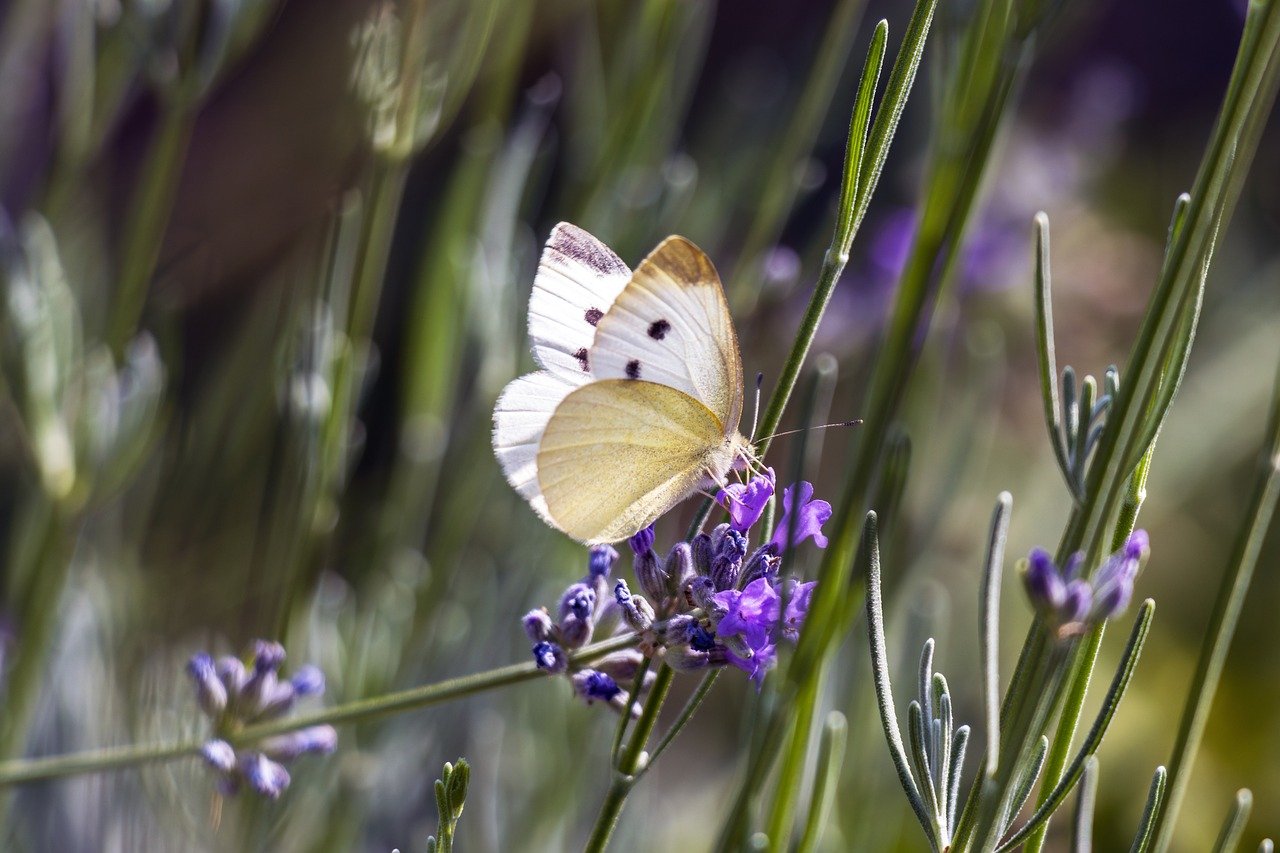
Photography Tips for Quilters
When it comes to showcasing your quilts, the first impression is everything. High-quality photography can make your quilts look stunning and draw potential clients in like moths to a flame. So, how can you ensure that your quilts are captured in the best light? Here are some essential tips to elevate your quilting photography game.
First and foremost, lighting is your best friend. Natural light is ideal for quilting photography, as it brings out the true colors and textures of your fabric. Try to photograph your quilts during the day when sunlight floods your space, but avoid direct sunlight, which can create harsh shadows. If you're shooting indoors, position your quilt near a window or in a well-lit room. If natural light isn’t available, consider investing in softbox lights to mimic that natural glow.
Next, think about your background. A cluttered or distracting background can take attention away from your quilt. Opt for a simple, solid-colored backdrop that complements the quilt without overwhelming it. For instance, a plain white or light gray wall can serve as a perfect canvas to highlight your quilt's intricate designs. If you want to add a touch of creativity, consider using textured fabrics or wooden surfaces as backdrops, but make sure they don’t compete with your quilt for attention.
Now, let’s talk about angles. Experimenting with different angles can dramatically change the perception of your quilt. A straight-on shot is great for showing the overall design, but don’t shy away from capturing details up close. A close-up of the stitching or fabric texture can reveal the craftsmanship and quality of your work. Remember, the goal is to tell a story with your images, so don’t be afraid to get creative!
Another crucial aspect is composition. Utilize the rule of thirds to create balanced and visually appealing photographs. Imagine your frame divided into three equal parts both horizontally and vertically. Position your quilt along these lines or at their intersections to draw the viewer's eye naturally. Additionally, consider incorporating props that complement your quilt, such as a cozy chair or a cup of tea, to create a warm, inviting scene.
Finally, editing can enhance your photographs significantly. Use photo editing software to adjust brightness, contrast, and saturation, ensuring that the colors of your quilt pop without looking unnatural. However, be cautious—over-editing can lead to unrealistic representations of your work. Aim for a polished look while maintaining authenticity.
In summary, capturing the beauty of your quilts through photography is an art in itself. By focusing on lighting, background, angles, composition, and thoughtful editing, you can create stunning images that showcase your quilts in the best possible light. So grab your camera and start snapping those beautiful creations!
Q: What camera should I use for photographing quilts?
A: You don't need an expensive camera to take great quilt photos. A good smartphone camera can suffice, but if you have a DSLR or mirrorless camera, use it for better quality images.
Q: How can I avoid shadows in my quilt photos?
A: To minimize shadows, use diffused lighting sources or reflectors to bounce light onto your quilt. Shooting on a cloudy day can also help reduce harsh shadows.
Q: Should I use a tripod for quilt photography?
A: Yes, using a tripod can help stabilize your camera and prevent blurry images, especially in low-light conditions. It also allows you to experiment with angles and compositions more easily.
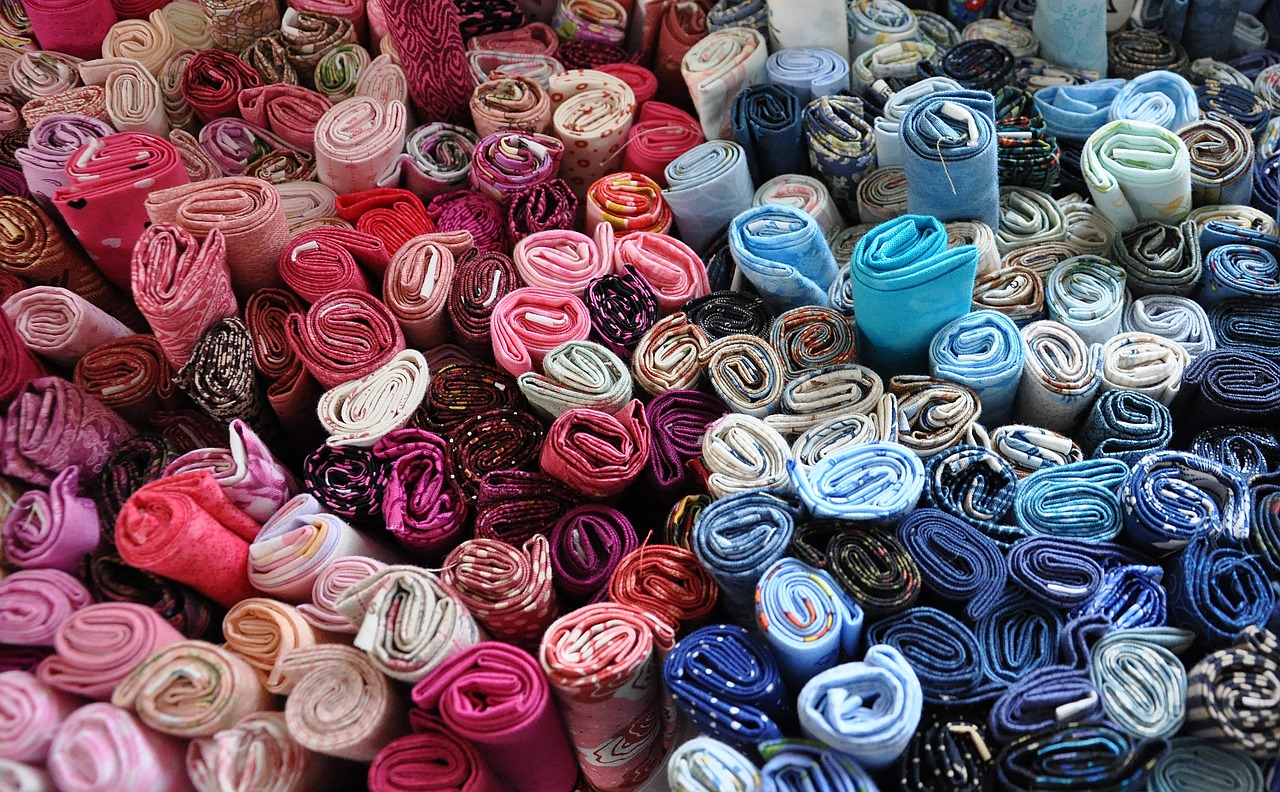
Presenting Your Work Online
In today's digital world, showcasing your quilting work online is not just an option; it's a necessity. Imagine your quilts as beautiful stories waiting to be told, and the internet is your canvas. Whether you're aiming to attract clients, share your passion, or simply connect with fellow quilters, having a strong online presence can make all the difference. So, how do you go about it? Let's dive into the essential steps to effectively present your quilting work online.
First and foremost, you need to choose the right platform. There are several options available, each with its unique advantages. For instance, Instagram is fantastic for visual storytelling, allowing you to post stunning images of your quilts and engage with a community of fellow enthusiasts. On the other hand, platforms like Facebook and Pinterest can help you reach a broader audience and share tutorials or blog posts. If you're serious about your quilting business, consider creating a dedicated website where you can showcase your portfolio, sell your quilts, and even share your quilting journey through a blog.
When it comes to actually presenting your work, quality matters. High-resolution images are a must. Think of your quilts as pieces of art; you wouldn't want to showcase them with blurry or poorly lit photos, right? Utilize natural light when photographing your quilts to capture their true colors and intricate details. A simple backdrop can also help your quilts stand out. Here’s a quick tip: try to photograph your quilts in different settings—on a bed, hanging on a wall, or draped over a chair—to give potential clients a sense of how they can incorporate your work into their spaces.
Another crucial aspect of presenting your work online is storytelling. Each quilt has a story behind it—whether it’s the inspiration, the materials used, or the techniques applied. Share these stories in your captions or blog posts. This not only adds a personal touch but also helps your audience connect with your work on a deeper level. When people understand the thought and effort behind a quilt, they are more likely to appreciate its value and consider making a purchase.
Additionally, engaging with your audience is key. Respond to comments, ask questions, and encourage discussions about quilting. This interaction not only builds a community around your work but also increases your visibility online. Consider hosting live sessions, where you can demonstrate quilting techniques or answer questions from your followers. This kind of engagement can foster loyalty and attract new clients.
Lastly, don’t forget about SEO (Search Engine Optimization). By using relevant keywords in your posts, descriptions, and website content, you can improve your chances of being discovered by potential clients searching for quilting services or products online. Think about what terms someone might use to find your work—like “custom quilts,” “modern quilting,” or “quilt patterns”—and incorporate those into your content strategically.
In summary, presenting your quilting work online is about more than just posting pretty pictures. It involves choosing the right platforms, investing in quality photography, sharing the stories behind your quilts, engaging with your audience, and utilizing SEO strategies. With these elements combined, you'll be well on your way to creating a compelling online presence that showcases your talent and attracts clients.
- What platforms are best for showcasing my quilts? Instagram, Facebook, Pinterest, and personal websites are excellent choices.
- How can I improve the quality of my quilt photos? Use natural lighting, simple backdrops, and high-resolution settings on your camera.
- Why is storytelling important for my quilting work? It helps create a personal connection with your audience and adds value to your quilts.
- How can I engage with my audience online? Respond to comments, ask questions, and consider hosting live sessions to interact directly.
- What is SEO and why should I care? SEO helps improve your online visibility, making it easier for potential clients to find your work through search engines.
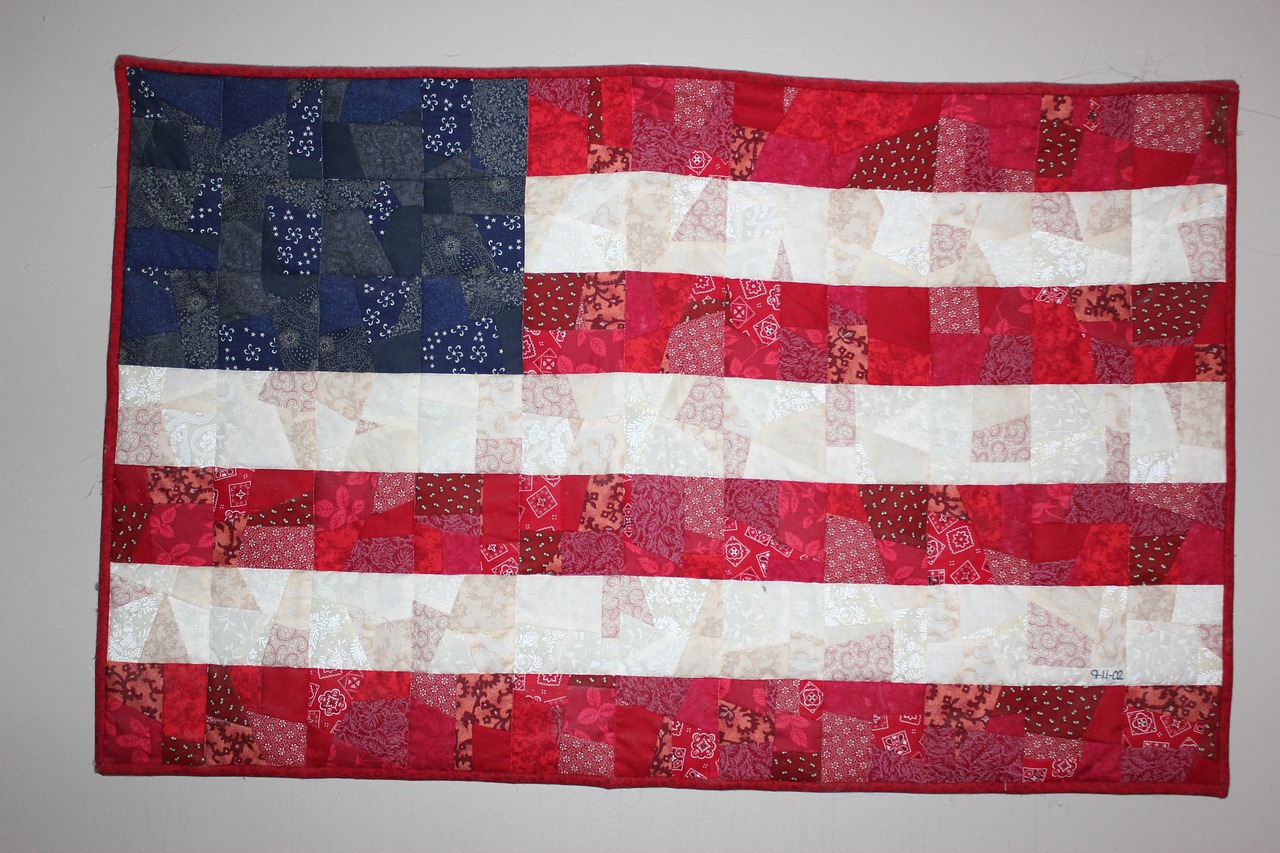
Marketing Your Quilting Business
Once you've honed your quilting skills and built an impressive portfolio, the next big step is to market your quilting business. Think of marketing as the lifeline of your quilting journey; without it, even the most beautiful quilts might go unnoticed. So, how do you get your amazing creations in front of the right audience? Let’s dive into some effective strategies that can help you shine like a star in the quilting universe!
First and foremost, networking is essential. Building connections with fellow quilters can lead to collaboration opportunities and referrals. Attend local quilting groups or workshops, participate in quilt shows, and don’t shy away from engaging with others in the quilting community. You never know who might be looking for a talented quilter for a project or who could recommend you to a potential client. Remember, every conversation is a chance to share your passion and skill!
In today’s digital age, having a strong online presence is crucial. Start by creating a visually appealing website that showcases your quilts. Make sure to include a gallery of your work, a blog where you share tips and techniques, and an easy way for potential clients to contact you. Your website is like your digital storefront; it should reflect your unique style and personality. To enhance your visibility, consider utilizing SEO techniques to help your website rank higher on search engines. This way, when someone searches for professional quilters, you’ll be among the top results!
Social media platforms are another powerful tool for promoting your quilting business. Use platforms like Instagram and Pinterest, which are highly visual, to share stunning photos of your quilts. Here are a few tips for maximizing your social media impact:
- Engage with Your Audience: Respond to comments, ask for feedback, and create polls to involve your followers in your quilting journey.
- Use Hashtags: Leverage popular quilting hashtags to reach a broader audience. Hashtags like #Quilting, #QuiltLife, and #FabricArt can attract quilting enthusiasts.
- Share Behind-the-Scenes Content: People love to see the process behind the finished product. Share videos or photos of your quilting process to connect with your audience on a personal level.
Additionally, consider creating a newsletter to keep your audience updated on your latest projects, upcoming workshops, or sales. This direct line of communication can help build a loyal following. A well-crafted newsletter can remind your audience of your work and keep them engaged with your brand.
Lastly, don’t underestimate the power of collaboration. Partner with other creatives, such as fabric designers or local artists, to create joint projects or workshops. This not only expands your reach but also adds a unique twist to your offerings. Collaborations can introduce you to new audiences and provide fresh content for your portfolio.
To summarize, marketing your quilting business is all about building connections, creating a strong online presence, actively engaging on social media, and collaborating with others. By implementing these strategies, you’ll be well on your way to attracting clients and making your mark in the quilting world!
Q: How can I effectively network with other quilters?
A: Attend local quilting events, workshops, and online quilting forums. Engaging in conversations and sharing your work can help build valuable connections.
Q: What social media platforms are best for showcasing quilts?
A: Platforms like Instagram and Pinterest are excellent for visual content. They allow you to share stunning images and engage with a community of quilting enthusiasts.
Q: How often should I update my website and social media?
A: Regular updates are key! Aim to post new content at least once a week to keep your audience engaged and informed about your latest projects.
Q: Is it necessary to have a newsletter for my quilting business?
A: While not mandatory, a newsletter can be a great tool for keeping your audience engaged and informed about your work, upcoming events, and special offers.

Networking with Other Quilters
Networking with other quilters is not just a nice-to-have; it's a game changer in the quilting world. Imagine walking into a room filled with people who share your passion for fabric, thread, and creativity. It’s like being a kid in a candy store, but instead of sweets, you’re surrounded by patterns, colors, and ideas that can ignite your creativity. Building connections with fellow quilters can lead to collaboration opportunities, workshops, and even referrals that can boost your quilting business.
So, how do you go about networking in this vibrant community? Start by joining local quilting clubs or guilds. These groups are treasure troves of knowledge and support. You’ll find seasoned quilters eager to share their experiences, tips, and tricks. Plus, attending meetings or events can help you make lasting friendships with others who understand the joys and challenges of quilting. Think of it as finding your quilting tribe!
Moreover, online platforms have made it easier than ever to connect with quilters from around the globe. Websites and forums dedicated to quilting allow you to share your work, ask questions, and get feedback from a diverse audience. Social media platforms like Instagram and Facebook are also fantastic for showcasing your quilts and discovering new techniques. You can join groups specifically for quilters, participate in discussions, and even collaborate on projects. The quilting community is incredibly supportive, and you might just find your next quilting buddy or mentor online.
Additionally, consider attending quilting conventions or workshops. These events are not only educational but also provide an excellent opportunity to meet other quilters. You can exchange ideas, learn new techniques, and even showcase your work. Remember, every conversation is a chance to learn something new and expand your network. Plus, you never know when a casual chat might lead to a collaboration or a client referral.
In essence, networking is all about building relationships that can enhance your quilting journey. Whether it's through local groups, online platforms, or events, the connections you make can open doors to new opportunities, inspire your creativity, and even lead to lasting friendships. So, get out there, engage with the community, and watch your quilting career flourish!
- What are the best ways to find local quilting groups? Start by searching online for quilting guilds in your area, check community bulletin boards, or visit local fabric stores for information on upcoming meetings.
- How can I effectively use social media to network with other quilters? Share your work regularly, engage with others by commenting on their posts, and join quilting groups on platforms like Facebook to connect with fellow enthusiasts.
- Are quilting conventions worth attending? Absolutely! They provide a wealth of knowledge, inspiration, and networking opportunities that can significantly benefit your quilting career.
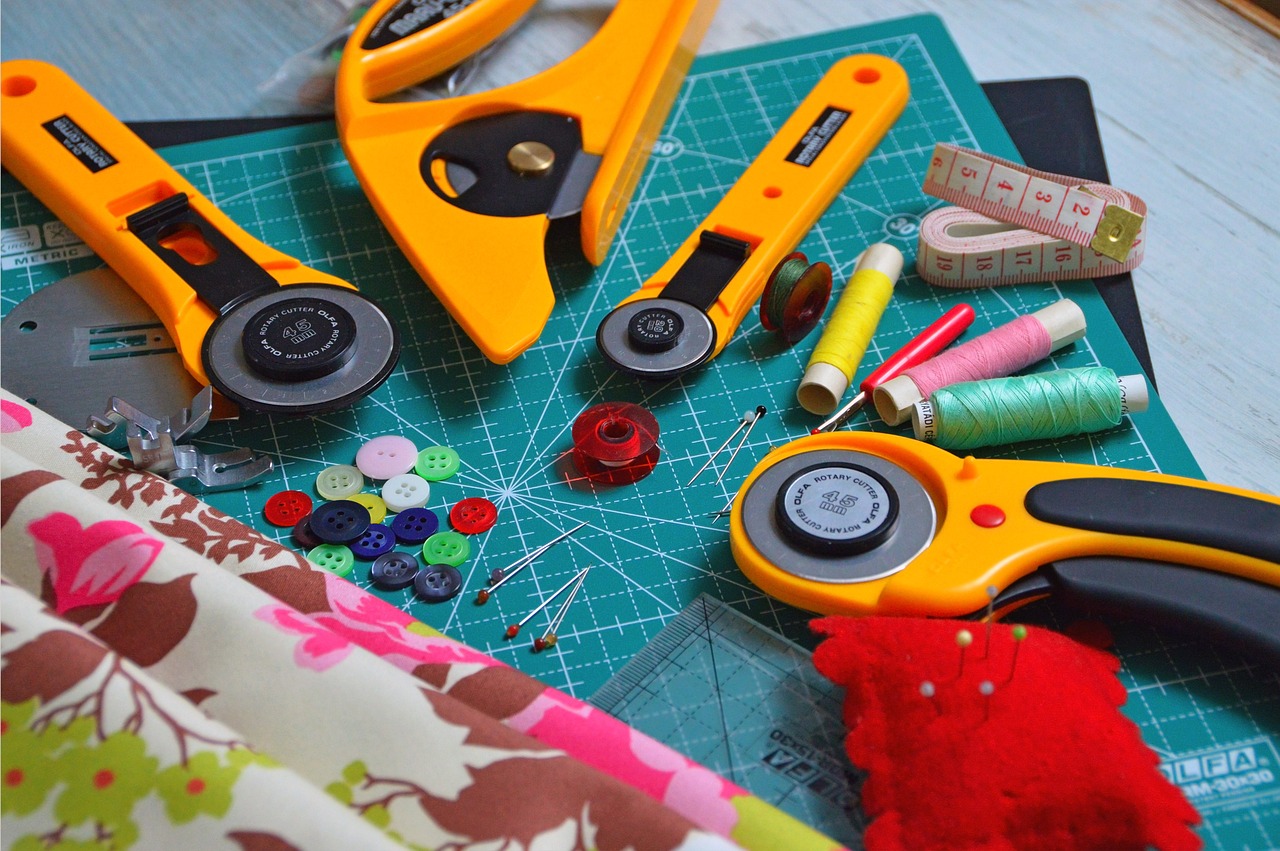
Utilizing Social Media for Promotion
In today's fast-paced digital world, social media has become a game-changer for quilters looking to promote their work. Imagine being able to showcase your beautiful quilts to an audience of millions, all from the comfort of your own home! Platforms like Instagram, Facebook, and Pinterest are not just social networks; they are powerful marketing tools that can elevate your quilting business to new heights. But how do you effectively utilize these platforms to attract clients and grow your brand?
First and foremost, it's essential to identify which social media platforms resonate best with your target audience. For instance, Instagram is a visual platform, making it ideal for sharing stunning images of your quilts. On the other hand, Facebook allows for more in-depth engagement through groups and community discussions. Pinterest serves as a fantastic platform for inspiration, where users often search for quilting ideas and tutorials. By understanding the unique features of each platform, you can tailor your content accordingly.
When creating content for social media, consistency is key. Regularly posting high-quality images of your quilts, along with engaging captions, can help keep your audience interested. Consider the following tips to enhance your social media presence:
- Use Hashtags Wisely: Incorporate relevant hashtags to increase the visibility of your posts. For example, hashtags like #Quilting, #QuiltArt, and #FabricLove can help you reach a broader audience.
- Engage with Your Audience: Respond to comments and messages promptly. Building a relationship with your followers can lead to loyal customers.
- Share Behind-the-Scenes Content: People love to see the process behind your creations. Sharing videos or stories of your quilting process can humanize your brand and create a deeper connection.
Additionally, collaborating with other quilters or influencers in the quilting community can boost your visibility. Consider hosting joint giveaways or challenges that encourage participation from your followers. This not only engages your audience but also exposes your work to new potential clients. Remember, the more interactive your content is, the more likely it is to be shared, further expanding your reach.
Finally, don't underestimate the power of analytics. Most social media platforms offer insights into how your posts perform. Analyzing this data can help you understand what type of content resonates most with your audience, allowing you to refine your strategy over time. By keeping an eye on trends and adjusting your approach, you can stay ahead in the competitive quilting market.
In summary, utilizing social media effectively can be a transformative step for any quilter looking to promote their work. By choosing the right platforms, engaging with your audience, and continuously refining your strategy, you can turn your passion for quilting into a thriving business.
Q: What social media platform is best for quilters?
A: It depends on your target audience, but Instagram and Pinterest are particularly effective for visual content.
Q: How often should I post on social media?
A: Consistency is important; aim for at least a few times a week to keep your audience engaged.
Q: Should I use hashtags?
A: Yes! Using relevant hashtags can significantly increase the visibility of your posts.
Q: How can I engage with my audience?
A: Respond to comments, ask questions in your posts, and share behind-the-scenes content to foster a community.
Frequently Asked Questions
- What are the essential skills needed to become a professional quilter?
To become a professional quilter, you should master basic sewing techniques, understand quilting terminology, and be proficient in using quilting tools. Additionally, creativity and a good eye for color and design are crucial to creating stunning quilts.
- How do I choose the right materials for quilting?
Choosing the right materials involves selecting high-quality fabrics and threads. Cotton is a popular choice for its durability, while silk can add a luxurious touch. Always consider the project type and desired finish when selecting your materials.
- What types of fabrics are best for quilting?
Cotton is the go-to fabric for most quilters due to its versatility and ease of use. Other options include flannel for warmth, silk for elegance, and polyester blends for durability. Each fabric type has unique characteristics that affect the final outcome of your quilt.
- What tools do I need to start quilting?
Essential quilting tools include rotary cutters, cutting mats, quilting rulers, and sewing machines. These tools help ensure precision and efficiency in your quilting projects. Investing in good quality tools can significantly enhance your quilting experience.
- How can I build a strong quilting portfolio?
To build a strong portfolio, showcase a variety of your best work, including different styles and techniques. High-quality photos are essential, so consider lighting and angles that highlight your quilts' details. Organize your portfolio in a way that tells your quilting story.
- What are some tips for photographing quilts?
When photographing quilts, use natural light to avoid harsh shadows. Lay the quilt flat or hang it against a neutral background for the best results. Close-up shots can capture intricate details, while wider shots show the overall design.
- How can I effectively present my work online?
To present your work online, consider using platforms like Instagram, Pinterest, and personal websites. Share high-quality images and engaging descriptions of your quilts, and don't forget to interact with your audience to build a loyal following.
- What marketing strategies work best for quilting businesses?
Effective marketing strategies include networking with other quilters, utilizing social media, and participating in quilting shows or fairs. Building relationships within the quilting community can lead to referrals and collaborations, helping to grow your business.
- Why is networking important in the quilting industry?
Networking is vital as it opens doors to collaborations, referrals, and learning opportunities. Engaging with fellow quilters can provide support, inspiration, and insights that can elevate your quilting practice and business.
- How can I use social media to promote my quilting?
Social media is a powerful tool for showcasing your work. Share progress shots, finished projects, and behind-the-scenes content. Engage with your followers through comments and stories, and use relevant hashtags to reach a broader audience.



















